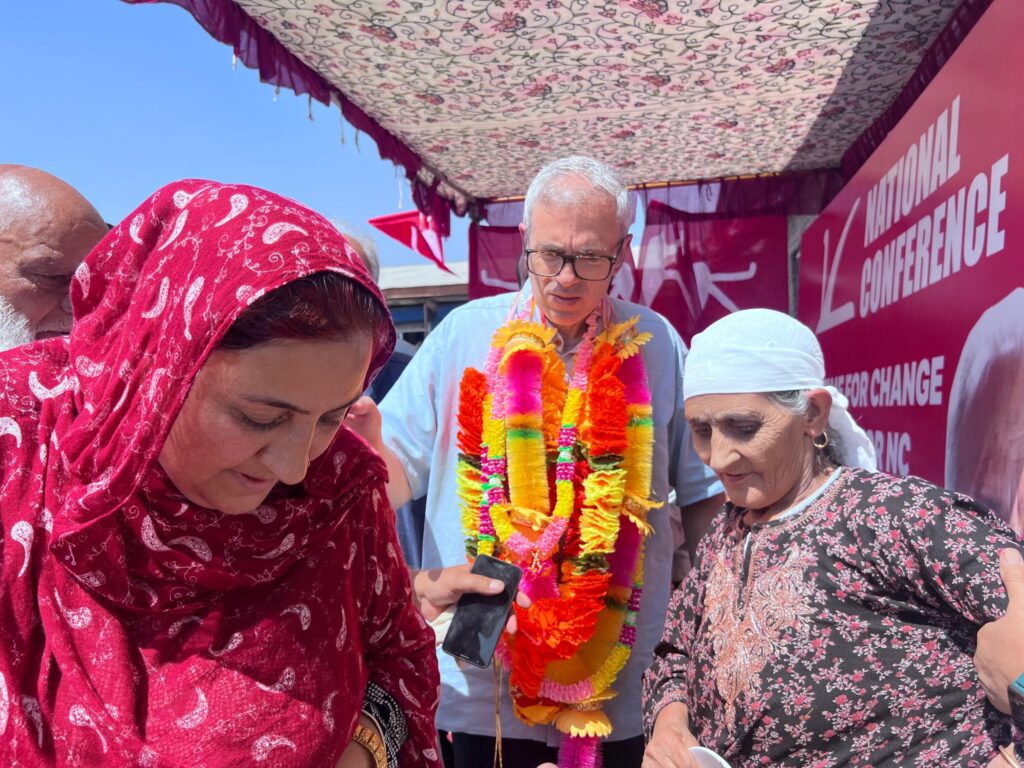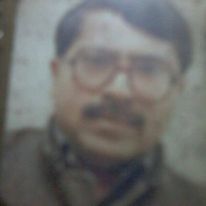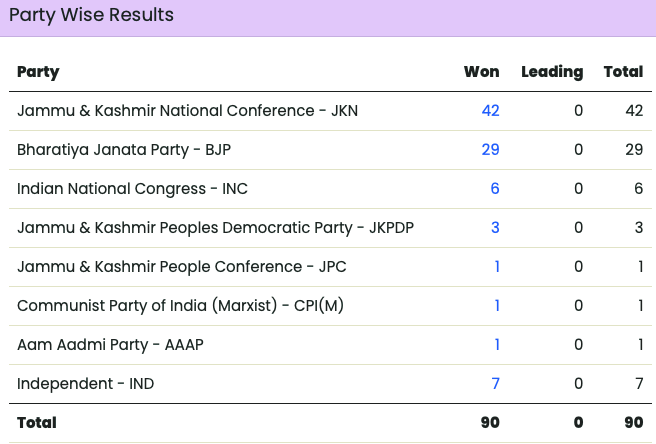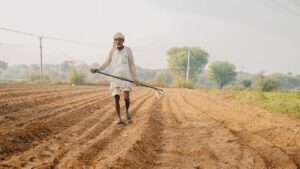
Omar Abdullah
After he lost in the Baramulla Parliamentary seat earlier this year, Omar Abdullah staged a ‘strong’ comeback winning both the Assembly seats that he contested, and his party, the Jammu & Kashmir National Conference (JKNC), is set to form the government in alliance with the Congress party in the Union Territory (UT) of Jammu and Kashmir (J&K).
A photo finish was predicted in most exit polls in J&K but the JKNC, led by Omar’s father Farooq Abdullah, along with its alliance partner, the Congress Party, won 49 out of a total of 90 seats. Yet, the Congress Party won only 7 seats, while the Bharatiya Janata Party (BJP) won 29 seats.
Today’s poll verdict will pave the way for J&K’s first elected government since the abrogation of Article 370 in 2019.
The JKNC vice president Omar Abdullah won his second seat, Ganderbal, by a margin of over 10,000 votes. After Omar’s victory in Budgam earlier, his father Farooq Abdullah said “ Omar will become the CM”.
The JKNC and the Congress Party are confident of the next government, but they are worried on several fronts as there is no business, no industry, no tourism, and the UT suffers from huge unemployment problems.
A major challenge before the new government is the issue of statehood for J&K, which was promised by all parties in their respective manifestoes.
With the BJP now in the Opposition, it may not be easy to grant statehood, since the BJP-ruled Central Government may not be willing, despite its promise to this effect on the floor of the Parliament.
Sources in the BJP said that the Centre wants to control the J&K because of security and terrorism issues with neighbouring Pakistan. Without statehood, the J& K will remain like a municipality and will be at the beck and call of the Centre.
Another major political issue before the new government will be dealing with the J&K Lieutenant Governor Manoj Sinha, who is the real authority and Centre’s representative in the J&K region and could intervene in day-to-day administrative matters at any time and give directions as he pleased.
So, in other words, more than with the Centre, the new Omar Abdullah government will have to deal with the LG, who is likely to follow the Delhi pattern where the Aam Aadmi Party (AAP) is in government, and complains of non-cooperation from every LG who assumed the office during AAP’s tenure.
With regards to the performance of the various parties in the valley, Mehbooba Mufti’s People’s Democratic Party (PDP), which was the largest single party with 28 seats in 2014, suffered huge losses and managed to win only 3 seats. Seven independents have been declared victorious. The AAP, in a surprise entry, won its first-ever seat in the Union Territory in the Doda Assembly constituency. Much talked about Engineer Rashid’s, Awami Ittehad party could win only one seat. The Jamaat -e Islami, the banned outfit, contested for 10 seats, but failed miserably and could not open an account.
The BJP dominated the Jammu region winning 29 seats. But it posted a dismal performance in the Kashmir Valley despite the Union government’s five-year push to transform the region into a “Naya Kashmir” with a focus on peace, development and prosperity. The promised change did not convert into votes for the saffron party in the region.
The BJP might have liked to rule the State and ideally with a Hindu Chief Minister but that did not happen.
The J&K election was significant in many ways. While several former separatists contested this time, the overall voters’ turnout was also impressive and in the three-phased election, nothing better than this 64 per cent voter turnout sanctified a big change. The election was peaceful, underlining the changed popular mood and enhanced state capacity. Unlike in the past, nobody said that this election was not fair. People’s Conference leader Sajad Lone expressed satisfaction with the outcome, particularly with his victory in his constituency Handwara. Mehbooba Mufti too, extended her congratulations to JKNC on its victory, underscoring the need for a stable government to address the challenges faced by the region.
Interestingly, in the last assembly election which was held in 2014 and proved the most competitive in a decade for the then state of J&K, Mehbooba’s PDP emerged as the single largest party with 28 seats (all in the Kashmir Valley), though falling far short of the majority mark of 44 in the then 87-member State Assembly. The BJP followed with 25 seats all in the Jammu region at that time, while the JKNC got only 15 seats. The Congress Party had got 12 seats then, while the People’s Conference had won two and the Communist Party of India (Marxist), one.
*Senior journalist







